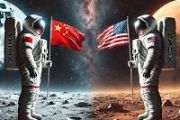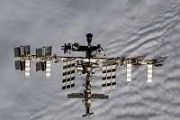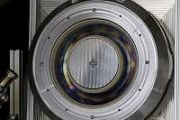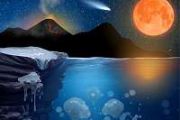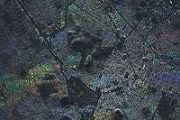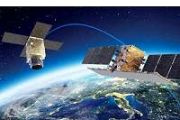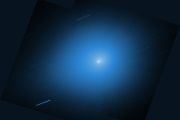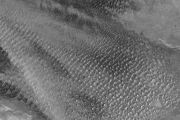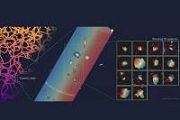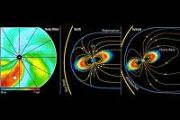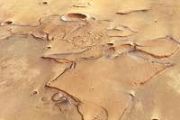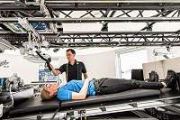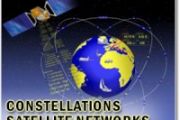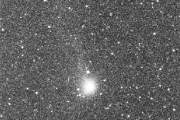
Copernical Team
FAA OK's SpaceX to launch Starship again after last flight's destruction
This request seems a bit unusual, so we need to confirm that you're human. Please press and hold the button until it turns completely green. Thank you for your cooperation!
Press and hold the button
If you believe this is an error, please contact our support team.
185.132.36.159 : 3573b766-8d28-450e-bd9b-56b92164
Waltzing celebration for half a century of European satellite tracking

2025 marks a landmark year for Europe’s ‘bridge between Earth and space’. The European Space Agency’s Estrack satellite tracking network turns 50 – and with it, its deep space antenna in Cebreros, Spain, celebrates 20 years of connecting Earth to the agency’s most distant missions.
Fittingly, this celebration of technological excellence coincides with the 200th birthday of Johann Strauss II and the 50th anniversary of the ESA. To honour this convergence of milestones, ESA and the Vienna Tourist Board are orchestrating a unique mission: broadcasting The Blue Danube Waltz to its destined home among the stars.
Don’t miss
Media invitation: register for Living Planet Symposium 2025

Media invitation: register for Living Planet Symposium 2025
Why are some rocks on the moon highly magnetic
 Where did the moon's magnetism go? Scientists have puzzled over this question for decades, ever since orbiting spacecraft picked up signs of a high magnetic field in lunar surface rocks. The moon itself has no inherent magnetism today.
Now, MIT scientists may have solved the mystery. They propose that a combination of an ancient, weak magnetic field and a large, plasma-generating impact ma
Where did the moon's magnetism go? Scientists have puzzled over this question for decades, ever since orbiting spacecraft picked up signs of a high magnetic field in lunar surface rocks. The moon itself has no inherent magnetism today.
Now, MIT scientists may have solved the mystery. They propose that a combination of an ancient, weak magnetic field and a large, plasma-generating impact ma Strauss' 'Blue Danube' waltz is launching into space to mark his 200th birthday
This request seems a bit unusual, so we need to confirm that you're human. Please press and hold the button until it turns completely green. Thank you for your cooperation!
Press and hold the button
If you believe this is an error, please contact our support team.
185.132.36.159 : a2e3380e-c178-44d8-a5b0-d857f657
Photon control breakthrough at ultra-low temperatures advances quantum technology
 Scientists at Paderborn University have set a new benchmark in quantum photonics by demonstrating the fastest control yet of individual photons in a cryogenic circuit. Their achievement marks a significant leap for quantum communication, simulation, and information processing by enabling real-time manipulation of single light particles at temperatures near absolute zero.
The research team
Scientists at Paderborn University have set a new benchmark in quantum photonics by demonstrating the fastest control yet of individual photons in a cryogenic circuit. Their achievement marks a significant leap for quantum communication, simulation, and information processing by enabling real-time manipulation of single light particles at temperatures near absolute zero.
The research team Titan atmosphere wobbles like a gyroscope revealing seasonal shifts
 The unusual motion of Titan's atmosphere has been uncovered by scientists at the University of Bristol using data from NASA's Cassini-Huygens mission. Their research shows that Saturn's largest moon possesses an atmosphere that doesn't rotate in sync with its surface but instead exhibits a wobble resembling a gyroscope.
Through 13 years of thermal infrared measurements from the Cassini spa
The unusual motion of Titan's atmosphere has been uncovered by scientists at the University of Bristol using data from NASA's Cassini-Huygens mission. Their research shows that Saturn's largest moon possesses an atmosphere that doesn't rotate in sync with its surface but instead exhibits a wobble resembling a gyroscope.
Through 13 years of thermal infrared measurements from the Cassini spa Gold and precious metals traced to Earth's core in Hawaiian lava
 Researchers at the University of Gottingen have uncovered evidence that material from Earth's core, including gold and other precious metals, is leaking into the planet's upper layers. Their study, published in Nature, reports the detection of the rare isotope 100Ru (ruthenium) in volcanic rocks from Hawaii, indicating that the samples originated from deep within the core-mantle boundary, around
Researchers at the University of Gottingen have uncovered evidence that material from Earth's core, including gold and other precious metals, is leaking into the planet's upper layers. Their study, published in Nature, reports the detection of the rare isotope 100Ru (ruthenium) in volcanic rocks from Hawaii, indicating that the samples originated from deep within the core-mantle boundary, around Numerical models uncover how barred olivine crystals formed in ancient meteorites
 Researchers from Nagoya City University and Tohoku University have successfully simulated the formation of barred olivine, a rare mineral texture found in chondrules-small spherical particles within meteorites dating back to the early solar system. Unlike textures in Earth rocks, barred olivine is unique to these primordial materials.
Led by Associate Professor Hitoshi Miura, the team used
Researchers from Nagoya City University and Tohoku University have successfully simulated the formation of barred olivine, a rare mineral texture found in chondrules-small spherical particles within meteorites dating back to the early solar system. Unlike textures in Earth rocks, barred olivine is unique to these primordial materials.
Led by Associate Professor Hitoshi Miura, the team used Rocket Lab to deploy BlackSky Gen3 satellite on next Electron launch
 Rocket Lab USA has announced it will launch the next BlackSky Gen-3 satellite as part of its continued partnership with the real-time space-based intelligence company. The mission, named "Full Stream Ahead," is scheduled to lift off from Launch Complex 1 in New Zealand during a window opening May 28, 2025 (UTC).
This upcoming flight marks the second of four planned Electron missions this y
Rocket Lab USA has announced it will launch the next BlackSky Gen-3 satellite as part of its continued partnership with the real-time space-based intelligence company. The mission, named "Full Stream Ahead," is scheduled to lift off from Launch Complex 1 in New Zealand during a window opening May 28, 2025 (UTC).
This upcoming flight marks the second of four planned Electron missions this y 








